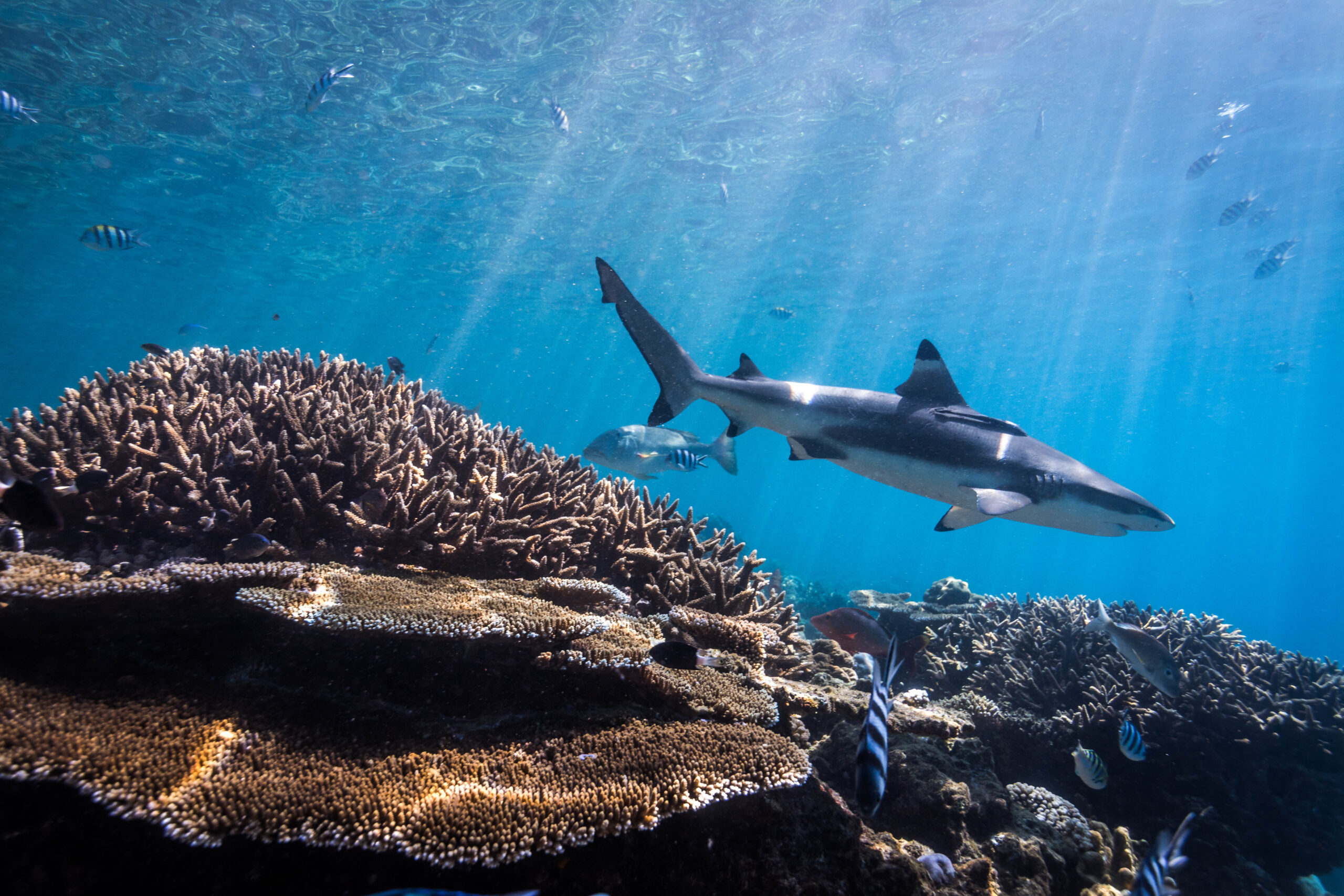Effective herbivore management is a tool that managers can use to help maintain coral reef resilience in the face of global stressors like coral bleaching events. One way to manage herbivores is to establish networks of herbivore management areas (HMAs), which prohibit the take of herbivorous fishes and invertebrates while allowing other extractive and non-extractive uses. This strategy integrates marine spatial planning with resilience-based management – i.e., the reduction local stressors while fostering key resilience processes, like herbivory. In this study, 11 biophysical design principles for HMAs were identified to guide the design and implementation of HMAs as a resilience-building tool, with the objective of maintaining and increasing coral reef resilience by maintaining and/or increasing herbivore biomass, abundance, and functional diversity. The design principles focus on the themes of habitats, critical areas, connectivity, climate considerations, and local threats and include:
-
- Protect 20–40% of each type of herbivore habitat
- Protect at least three examples of each type of herbivore habitat
- Protect areas with naturally high herbivore biomass and/or functional diversity
- Protect areas likely to have the greatest herbivore fisheries recovery potential
- Ensure the network includes areas important for the ecological needs of all post-settlement life-history stages of herbivores (e.g., nursery, sheltering, feeding, and spawning grounds)
- Scale size and spacing of HMAs based on movement patterns and larval dispersal of herbivorous species
- Ensure HMAs are large enough to include movement patterns of adult and juvenile herbivore species
- Ensure larval connectivity within the network
- Include areas that have withstood ecological disturbances in the past and/or are more likely to withstand them in future
- Include some areas of high risk of regime shifts from coral to algae, which would benefit most from increased protection of herbivores
- Avoid areas with unnaturally high levels of sediment and nutrients (that are beyond the direct jurisdiction of fisheries managers)
The authors also provide a case study of how to apply these HMA design principles using the Main Hawaiian Islands as an example system.
Authors: A. E. Chung, L. M. Wedding, A. L. Green, A. M. Friedlander, G. Goldberg, A. Meadows, and M. A. Hixon
Year: 2019
View the full article here.
Frontiers in Marine Science 6:98: doi: 10.3389/fmars.2019.00098


